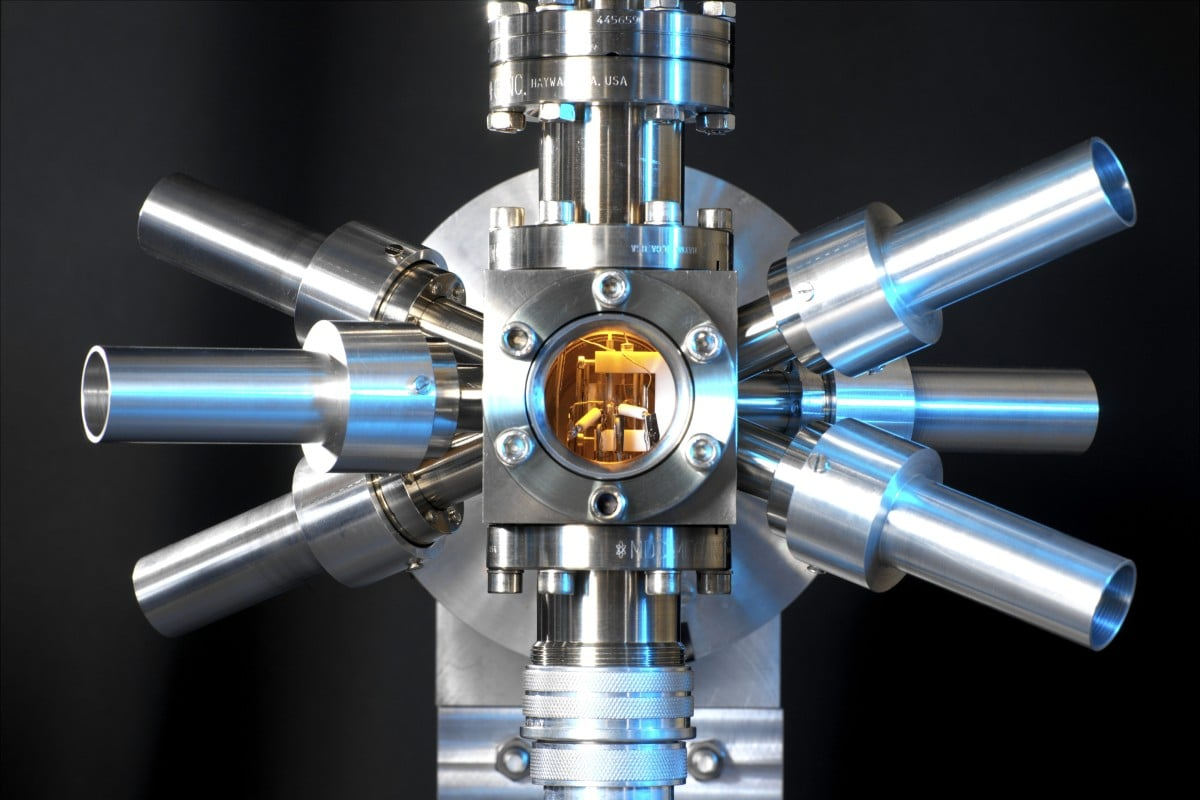According to SCMP, by leveraging ultra-cold strontium atoms along with the power of laser beams, the research team at the University of Science and Technology of China has created a clock with stability and uncertainty below 5 parts in a quintillion. This breakthrough not only marks China as the second country in the world after the US to achieve high accuracy in time measurement, but also lays an important foundation for establishing a global optical clock network.
Under the leadership of physicist Pan Jianwei, the research team published their findings in the scientific journal Metrologia, which were evaluated earlier this month. They also emphasize that this invention opens up new directions for testing fundamental physical theories, detecting gravitational waves, and searching for dark matter.
Currently, the most accurate optical clock based on strontium is held by the University of Colorado Boulder (US). This clock was developed by a research group led by physicist Jun Ye. The clock itself still maintains its position as the world leader, with even higher accuracy and stability compared to its Chinese counterpart.
Not only the US and China, research groups from the University of Tokyo and the Institute of Physical and Chemical Research of Japan, along with the National Metrology Institute of Germany, are also undertaking projects to develop optical clocks.

Optical clock based on strontium
Redefining the second as a fundamental unit of time.
Essentially, optical clocks have great potential for applications in critical infrastructure in the future. They can significantly enhance the accuracy of global positioning systems and help build extremely secure communication networks based on quantum key distribution. In addition, they can improve the synchronization and efficiency of power grids, and also play a crucial role in national defense and security.
In the modern scientific world, the definition of a second is based on the operation of an atomic clock, a special type of atomic clock. This clock operates based on the principle of launching cesium atoms high, then they fall back under the influence of gravity, creating a motion similar to a fountain. In this process, cesium atoms are excited by microwave pulses, causing their electrons to absorb and emit light particles, thereby transitioning between different energy levels.
By counting the cycles marking a fraction of a second, scientists can accurately measure time with stability in the order of a few parts in a quadrillion.
However, the accuracy of atomic clocks is limited by the microwave frequency standards. To address this challenge, researchers in recent years have developed optical clocks that use laser light to drive electronic transitions, thereby achieving superior performance two orders of magnitude greater than atomic clocks.
However, for optical clocks to replace atomic clocks in defining time in the future, there are at least three laboratories in the world that must have optical clocks with stability below 5 parts in a quintillion and uncertainty below 2 parts in a quintillion.
These two factors are key to the performance and reliability of an optical clock. Here, stability measures the variation in clock frequency over time, while uncertainty reflects the reliability of frequency measurement by the clock.

Pan Jianwei – famous Chinese scientist, leading the research group in Hefei, Anhui province (China) Photo: Xinhua News Agency
In their research, the Chinese research team led by Pan Jianwei – who is known as the “father of Chinese quantum” – cooled down the strontium-87 atoms to a few micro-Kelvin and trapped them in a lattice created by intersecting laser beams. They then used an extremely stable laser beam to interact with the trapped strontium-87 atoms and activate the clock transition process, characterized by high stability and accuracy.
The researchers also performed comparative frequency measurements between two different optical clocks, demonstrating that the stability of each optical clock alone is about 2.2 parts in a quintillion. Thus, the deviation of the entire system reaches 4.4 parts in a quintillion, equivalent to a deviation of one second every 7.2 billion years, according to the research team’s conclusion.
The research team also plans to perform comparative tests between optical clocks using different atomic species such as strontium-87 and ytterbium-171. The purpose of this is to explore and optimize the performance of different types of optical clocks based on different atoms, an important step in improving the accuracy of time measurement.





![[Photo Essay]: Experts, Managers, and Businesses Unite to Forge a Path Towards Sustainable Green Industry](https://xe.today/wp-content/uploads/2025/07/z678592918-150x150.jpg)


![[Photo Essay]: Experts, Managers, and Businesses Unite to Forge a Path Towards Sustainable Green Industry](https://xe.today/wp-content/uploads/2025/07/z678592918-100x70.jpg)



